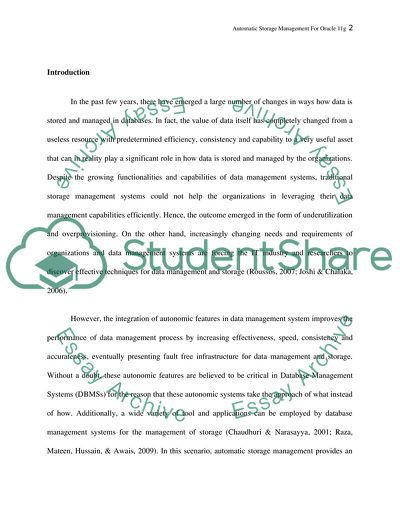Cite this document
(Automatic Storage Management for Oracle database 11g Term Paper Example | Topics and Well Written Essays - 2500 words - 1, n.d.)
Automatic Storage Management for Oracle database 11g Term Paper Example | Topics and Well Written Essays - 2500 words - 1. https://studentshare.org/information-technology/1802660-automatic-storage-management-for-oracle-database-11g
Automatic Storage Management for Oracle database 11g Term Paper Example | Topics and Well Written Essays - 2500 words - 1. https://studentshare.org/information-technology/1802660-automatic-storage-management-for-oracle-database-11g
(Automatic Storage Management for Oracle Database 11g Term Paper Example | Topics and Well Written Essays - 2500 Words - 1)
Automatic Storage Management for Oracle Database 11g Term Paper Example | Topics and Well Written Essays - 2500 Words - 1. https://studentshare.org/information-technology/1802660-automatic-storage-management-for-oracle-database-11g.
Automatic Storage Management for Oracle Database 11g Term Paper Example | Topics and Well Written Essays - 2500 Words - 1. https://studentshare.org/information-technology/1802660-automatic-storage-management-for-oracle-database-11g.
“Automatic Storage Management for Oracle Database 11g Term Paper Example | Topics and Well Written Essays - 2500 Words - 1”. https://studentshare.org/information-technology/1802660-automatic-storage-management-for-oracle-database-11g.


